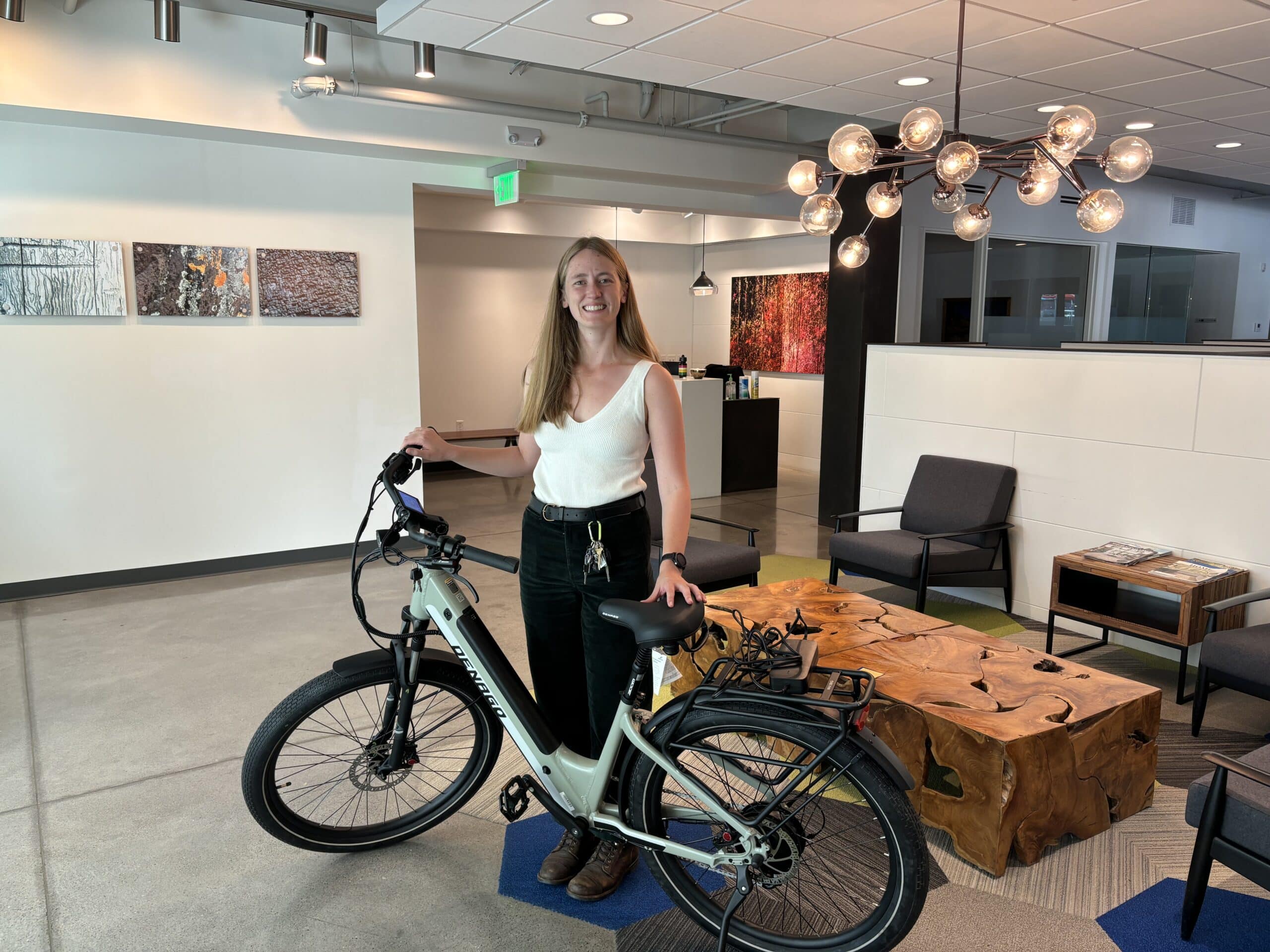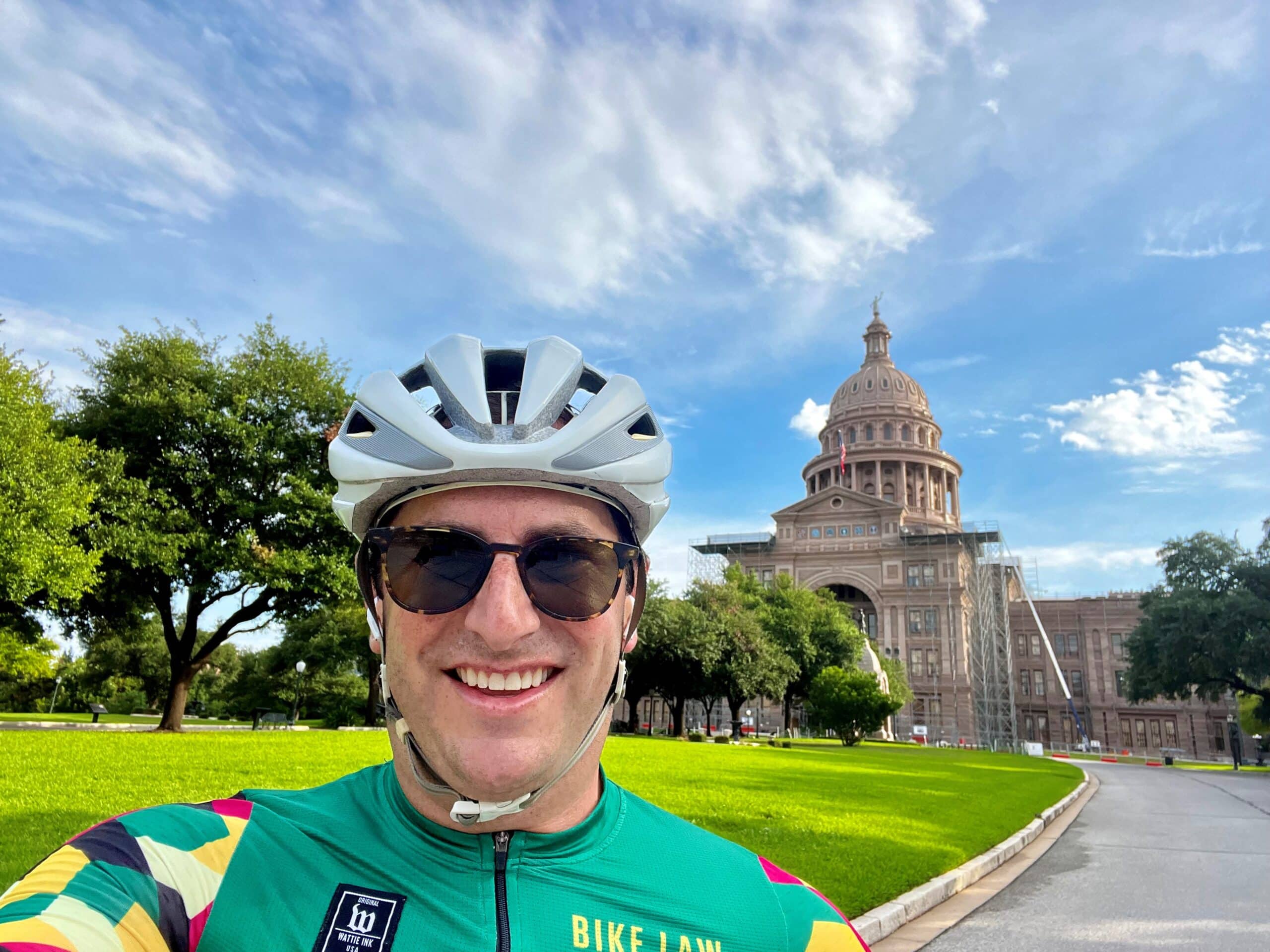“There are two types of bicycle riders, those who have crashed and those who will crash.” I recall being told this when I first began cycling and time has proven it to be true. In my case, the crashes have been numerous. As my dad has pointed out, I have a need for doing everything to its extreme. While this has led to uncountable adrenaline rushes and a feeling that constantly makes me feel like I am truly alive, it has also led to some bumps and bruises along the way. Still, I have been fortunate. All of my sports-related injuries have been relatively minor. However, my most recent crash was more serious and for the first time, I crashed my bike in a way that landed me in the hospital.
It was a weeknight bicycle race in Michigan. The field sprint was winding up and riders were fighting for position. In one of the final turns, a rider abruptly turned into me. We leaned against each other and after he bounced off another rider, I went down. I slid across the pavement and everything seemed to move in slow motion. Eventually, coming to rest, I did a quick inventory and thought “Lucky me, collar bone intact, limbs feel good, I think I got through this with just the loss of some skin and a shredded kit.” At that moment – BAM! – a rider slammed into my back with his front wheel. I immediately started having trouble breathing and I had a sharp pain in my side.
After an ambulance ride to the hospital, x-rays, and an ultrasound, I was diagnosed with fractured (cracked) ribs, a pulmonary contusion (bruised lung), and abrasions (road rash) to my back, ankle, knee, shoulder, both hips and elbows.

Like anything in life, I wanted to learn from this experience. By this, I don’t mean replaying the crash and looking for fault. I know that the rider that made contact with me and set off the crash would never have done so intentionally. Rather, I wanted to think about what I felt, saw, and experienced after the crash to better understand what other cyclists who have crashed and been injured, including my clients, go through; thereby, allowing me to better assist them as a fellow rider, advocate, and friend, if the need should arise. Below are some of the things I learned and, things I already knew but were reinforced by this experience:
Helmets work – As I was sliding across the pavement, I rolled over onto my shoulder and could hear my helmet briefly make contact with the ground. When the dust cleared, someone grabbed my helmet and noted there were scrape marks on the shell and the foam inside the helmet had a small, but noticeable crack. I also had a small cut on my head and the next day noticed a bump on my head. If not for my helmet, I believe I likely would have sustained a serious head injury.
Gloves are for protection, not improved grip – I don’t like wearing gloves and typically don’t wear them. They don’t improve my comfort on the bike, or my grip on the bars. However, when I am racing on pavement or riding in a group, I try to remember to wear them. While I tried to roll and not extend my hands and arms, at some point I must have instinctively reached out with my left hand. There were a few small abrasions on the inside of a few of my fingers and my glove was completely shredded. No question, the glove prevented what would have been some very painful road rash in an area of the body that is loaded with nerve endings.
There are plenty of good medical professionals – Lawyers and doctors are often seen as adversaries, but I have always felt doctors and lawyers are part of a team to help an injured person in need. There are good and bad doctors, just as there are good and bad lawyers. I truly believe most people go into medicine because they want to help others. All of the healthcare professionals that cared for me could not have been more professional, caring, and respectful. I wish I could personally thank each and every one of the EMTs, nurses, doctors, and x-ray techs that provided me with care.
Medical history is not an exact science – The initial medical records often become important evidence in a case. Lawyers dissect every word in the records, as if the writer spent days writing, proof reading, and re-writing every entry. I have heard it hundreds of times, “Your client didn’t complain of a loss of consciousness in the hospital.” “Your client didn’t complain of ankle pain to the EMTs or in the emergency room.” In reality, as good as the healthcare team may be, there are going to be inaccurate statements in trauma records. The trauma team is focused on the most pressing issues, they have many patients to work with, they are moving fast, and sometimes things are going to be miscommunicated. In my case, as the ambulance approached the hospital, one of the EMTs got on the radio and stated, “49-year-old male, bicycle crash at a high speed, wearing a helmet, negative loss of consciousness ….” Yet, when we arrived at the ER, the nurse said to me, “Tell me about the loss of consciousness. How long did it last?” When I told her I didn’t lose consciousness, she understandably doubted me (I was pretty banged up and had a broken helmet) and said the EMTs had reported that I did lose consciousness. Fortunately, the EMT was still by my side and chimed in that I had it right and that the radio must have broken up and they missed the word “negative” when he reported my symptoms. Still, when I saw a doctor several minutes later, the first question reinforced that my chart still reflected a positive loss of consciousness.
Be a Medical Advocate – If you have a friend or family member in the hospital, don’t be shy. As demonstrated above, the medical staff has a lot on their mind – multiple patients with multiple potential issues. They may need to have information reinforced, or even corrected. In the ER, I was tired, hungry, and in pain. I didn’t have the energy, strength, or desire to be the best advocate for myself. Clearly, a more seriously injured, or even unconscious, patient needs a friend or family member at their side to make sure the medical history is consistent and accurate and that the patient gets the attention they need.
Shaved legs help with more than muscle definition – Let’s face it, everyone who is not a cyclist thinks we look pretty goofy in our tight spandex shorts and colorful jerseys. And, the only thing that makes the shorts look more bizarre, in their eyes, is when a man shaves his legs. I have been shaving for years and have to admit that I like the way it looks, feels, and functions for many reasons. However, it is most beneficial when cleaning out road rash. It also makes it easier for bandages to stick to the skin, and far easier to remove.
The pain scale is a gauge of progress, not a measure of injury – Lawyers who represent injured people and defend injury cases often focus considerable time and effort on the “pain scale.” It is a simple and generally accepted way of evaluating pain. I recall one doctor testifying it was the “gold standard” for determining pain levels. The patient is simply asked to assign a number to their pain, on a scale from 0 to 10. I have seen it happen hundreds, maybe thousands of times. Yet, when the EMT asked me for my pain scale, I was at a loss. How could I quantify pain with a number? How could I know the number would mean the same thing to him as it meant to me? After a ride in the ambulance and a night in the hospital that involved numerous requests to rate my pain, it occurred to me, the pain scale is not used to compare pain between patients or to gauge how severe someone is injured, it is used to determine if a patient’s condition is improving or worsening over time.
Don’t underestimate the importance of sleep – I have always felt I could function on a small amount of sleep and that by reducing the time I slept, I was able to get more done during my waking hours. My current condition has had a dramatic negative impact on my ability to sleep. I now understand that lack of sleep has a dramatic impact on every aspect of my life. I can’t concentrate as well and am more irritable. If I were in a position to ride, I am certain my lack of sleep would prevent me from performing at a high level.
Bikes are still fun and the people who ride them are awesome – Even immediately after the fall, when I had no idea how seriously I was injured, before anyone came to my aid, I was thinking about when I would be able to ride again. “I clearly won’t make the weekly gravel road ride tomorrow and I doubt I will be riding this weekend, but if it isn’t as bad as it feels, maybe the end of next week…” Many of my cycling friends contacted me out of concern, but were also encouraging and understood that even with the pain, the joy of riding a bike was a primary thought as was my concern to get back on two wheels. Typical comments, emails and messages included, “Hope to see you on the road soon” and “Hope this doesn’t set you back too far with your cyclocross training.” I hope so too. I miss the feeling of being on a bike. I miss feeling as though I am fit. I even miss the feeling of pain shooting down my thighs when I walk down stairs the day after a tough workout. But, most of all, I miss the camaraderie and time spent with my biking friends.







